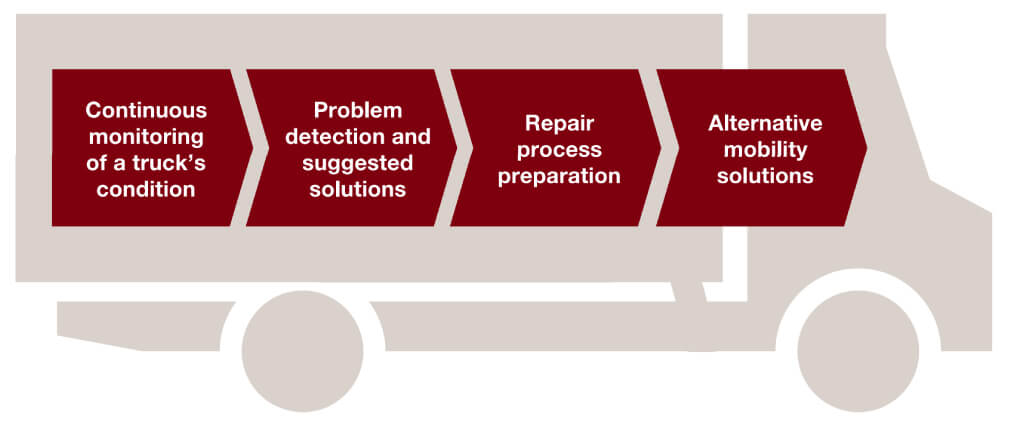How will logistics work in 10 years?
The study highlights some points where the trend to incorporate automation and AI technologies projects a more profitable future for the sector.
Content
- End-to-end supply chain:
- The first mile
- Warehouse Organization
- Logistics between warehouses
- The last Mile
1. End-to-end supply chain
In the scenario that experts envision, an automated goods-matching system will reduce administrative costs by reducing or even completely eliminating the human element - that is, the manual element - in the process of matching the goods to be shipped with the truck that will deliver them.
On the other hand, the report points out that algorithms are increasingly used to make the necessary decisions, using key data such as the delivery address; the weight, dimensions and condition of the goods to be delivered; and the knowledge of which trucks are on the road and their location.
At the same time, warehouses will need less inventory, and there will be less "loss" and less risk of error, leading to lower insurance costs.
All things considered, we see that these end-to-end costs will be reduced by up to 41% by 2030
2. The first mile
The process of taking goods from a factory in an urban area and delivering them to a distribution center outside the city, where they can be picked up for long-distance transportation, will be made more efficient by automating the process of allocating goods to the trucks. Vehicles will be loaded more efficiently and manual administrative functions will largely disappear. In addition, they will be equipped with alternative propulsion technologies, such as the electric ones.
The report estimates that costs in this segment will be 45% lower in 2030
3. Warehouse Organization
The out-of-town warehouse - where goods are delivered for long-distance transport - will use the fully automated docking and unloading of "first mile" deliveries.
They will also use automated systems for storage, retrieval and reloading into larger trucks. Amazon and other large retailers already use robots in their warehouses and this trend will continue.
Costs in this segment will be 60% lower in 2030
4. Logistics between warehouses
According to experts, by 2030, deliveries will be carried out by fully automated, driverless trucks. Those trucks will be joined in convoys in a concept known as "platooning," and remote diagnostics will identify and fix problems before they become serious and costly.

The biggest savings will be in labor.
Costs are estimated to be 46% lower in this segment
5. The last Mile
Analytics and dynamic forecasting will make delivery to homes more efficient. Drones and androids will deliver some goods, and administrative work in this segment will also be reduced thanks to the automated goods delivery system. In cities and towns, this stage will be the most similar to the current logistics process, since large autonomous trucks will not be suitable for crowded urban environments, and the automation of smaller trucks is pointless because a driver/operator is needed to make the final delivery.
Costs in this segment will be 51% lower in 2030
Conclusion
All this transformation, according to Strategist& will create a new, more profitable supply chain by 2030, although affecting some actors – such as truck transportation. Thus, as the report concludes, it is essential for the industry to recognize and work to keep pace with the disruptive changes in technology and automation in the coming years, in order to stay competitive.
To see the full report
Discover how we can help you
Please leave us your question and one of our assistants will contact you asap.